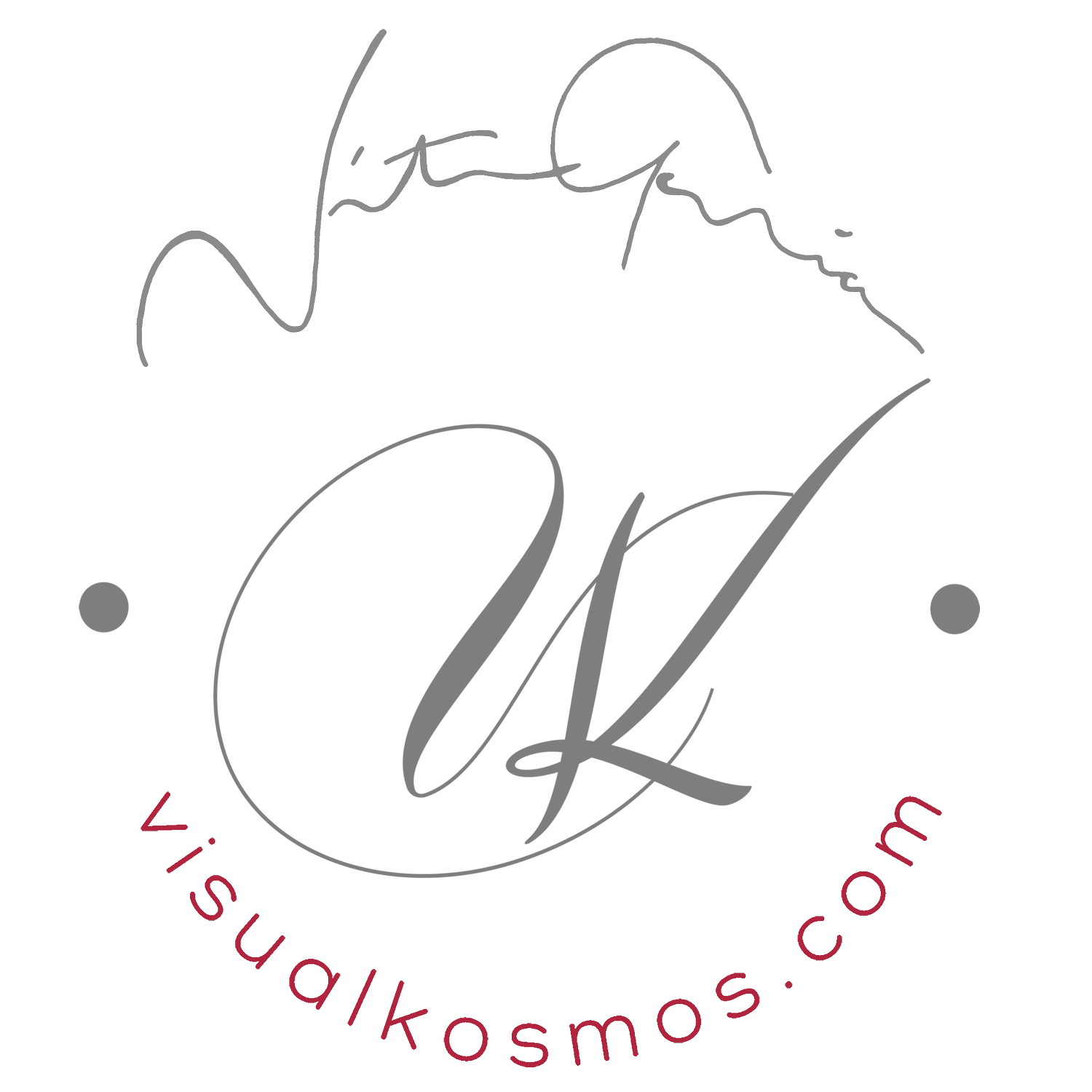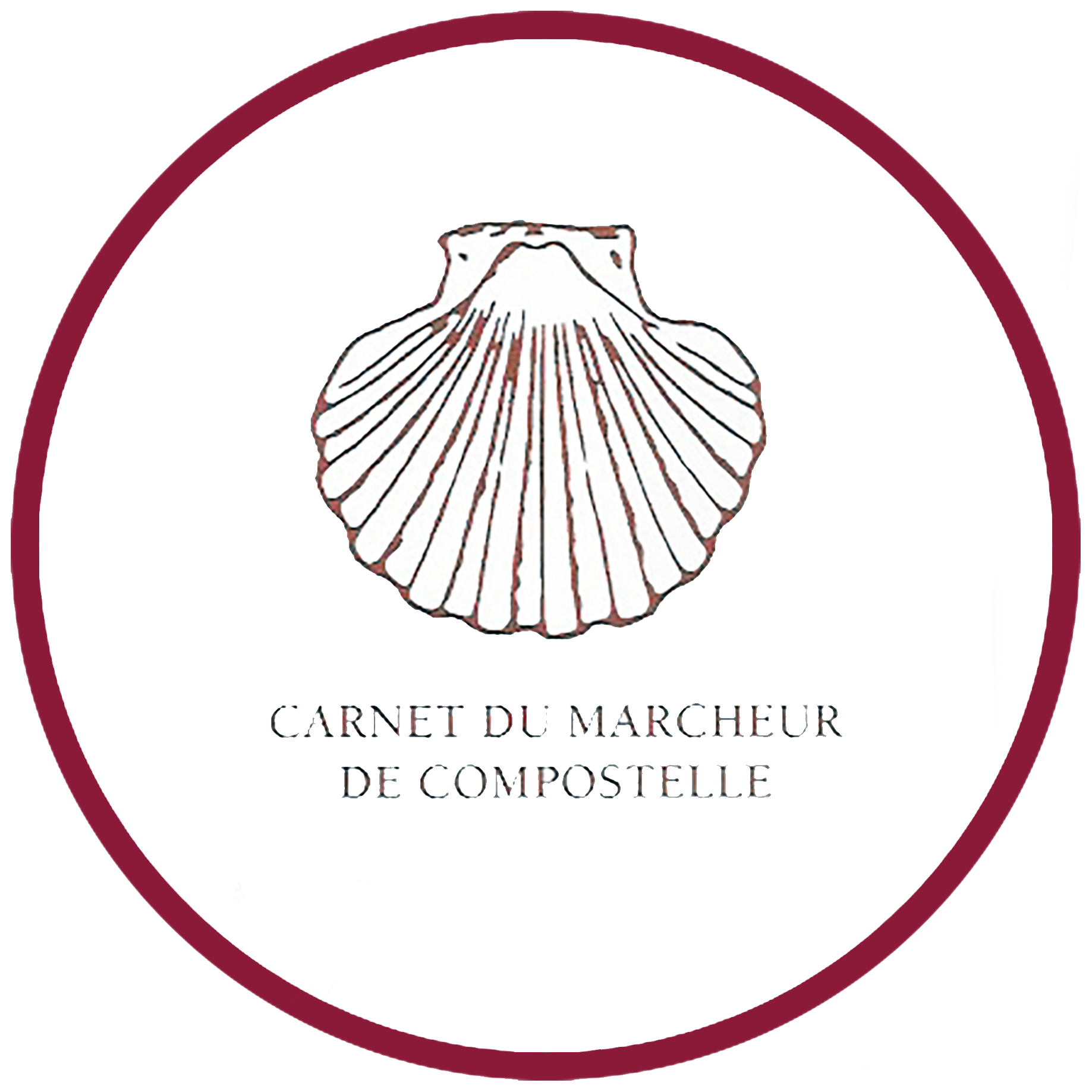On the road
in Pilgrimage
The roads to Santiago de Compostela
Over six days, we embarked on a captivating journey through the
Spiritual Variant
Covering roughly 80 km. Along the way, we discovered the alluring hidden treasures of the delightful communities that we encountered.
-
EN: In six days, we covered about 80 km. Suddenly, we are moving, going up and down paths in the middle of forests with refreshing rivers and birdsong. The gaze stops with each change of light. There is never silence; the sounds are immense: small sticks that break when you walk, breathing that accelerates when tiredness is more intense, the warm waves of other pilgrims, the wishes of “Bon Camiño”.
PT: Em seis dias, percorremos cerca de 80 km. De repente, estamos em movimento, subindo e descendo caminhos no meio de florestas com rios refrescantes e cantos de pássaros. O olhar detém-se a cada mudança de luz. Nunca há silêncio, os sons são imensos: pequenos paus que se quebram quando se caminha, a respiração que acelera quando o cansaço é mais intenso, os acenos calorosos de outros peregrinos, os votos de “Bon Camiño”.
-
Today we only managed to walk 7km from Pontevedra to Combarro as we started late at 4:00 pm.
During our trip, we had a fantastic chance to explore the beautiful monastery of Poio.① Igreja da Virgen Peregrina.
Located at the heart of Pontevedra, specifically in Praça da Peregrina, is the Igreja da Virgen Peregrina, which dates back to 1778. The chapel, built in 1753, features a centralized cross plan and a unique configuration shaped like a scallop (Vieira). This holy site holds a special significance for pilgrims, who often gather in large numbers.
② The pedestrian Burgo bridge
Pilgrims heading towards Santiago cross the pedestrian bridge with 11 round arches. Additionally, in Pontevedra, a medieval bridge was constructed over another Roman bridge that crosses the Lérez River.
③ Capela de San Paio
As we travel along the PO-531 road through the town of O Freixo, we can visit the charming Chapel of San Paio (42.4573 -8.65149). This modest chapel pays homage to San Pelayo and features a remarkable depiction of the Immaculate Heart of Mary on its rear facade.
④ Parada de Abaixo
Located just 3 km from Parada de Baixo, a must-visit site, is the prehistoric dolmen of Axeitos. It is renowned for being one of the best-preserved dolmens in Galicia.
⑤ O Rego da Cancela
As we strolled down Rego da Cancela, we headed towards the Monastery of San Xoán de Poio and the Hórreo do Monastery of Poio.
⑥ Mosteiro de San Xoán de Polo
Mosteiro de San Xoán de Polo
Horréo de Poio
⑦ Combarro
The description text goes here -
The initial leg of the journey from Combarro to A Armenteira, spanning 13 km, proved to be exhausting.
① Combarro
The description text goes here
② Cidrás
The description text goes here
③ Xuviño
The description text goes here
④ Cruceiro da Armada
The description text goes here
⑤ Mirador de Loureiro
The description text goes here
⑥ O Esperón
The description text goes here
⑦ Vilar
The description text goes here
⑧ Petroglifo Outeiro do Cribo
The description text goes here
⑨ Armenteira
The description text goes here -
One of the most picturesque sections of the 12 km hike is surrounded by cascading waterfalls and the sweet melodies of chirping birds.
This journey, which includes the Stone and Water Route, starting at the Armenteira monastery, was enriching. A path that is done without difficulty and, for that very reason, intensifies the pleasure we were feeling. The sound of the water along the river, the birds singing, and the abundant green on the rocks make us feel trapped in this place.
① Monastery of A Armenteira
This stage begins at the Monastery of the Cistercian Order of Santa Maria de Armenteira (c.1162), next to Rego da Armenteira. We find places of immense beauty along this beautiful watercourse (essentially between Armenteira and Pontearnelas on the Rota da Pedra e da Água). The sound of water, waterfalls, windmills, beautiful trees, birdsong or a well-kept trail allows us to experience this journey smoothly while feeling the air carrying a fresh aroma.
② Vilar
Description text goes here
③ Muiño de Regueira
Um pouco mais adiante de Pedra Furada (42.4828466, -87410615), surge o Muiño de Regueira.
O Rego da Armenteira, continua a proporcionar uma agradável caminhada.
④ Aldea Labrega
Description text goes here
⑤ Aldeia de Pedra
Aldeia da Pedra, um local de bonitos espigueiros, surge momentos antes de se iniciar verdadeiramente a Ruta da Pedra e da Auga, onde podemos encontrar o Molino de O Serén.
⑥ Ruta da Pedra e da Auga
É sobretudo neste local (junto ao Molino de O Serén” ainda ao longo do Rego da Armenteira que a Ruta da Pedra e da Auga começa a ser mais deslumbrante. Em bom rigor esta Ruta da Pedra e da Auga acaba em Os Castaños, uma vez que o Rego da Armenteira a partir deste local segue um percurso diferente ao nosso. Agora iremos em direcção ao Rio Umia. Iremos atravessa-lo junto ao Club Náutico “O Muiño”
⑦ A Bandeira
Antes de passarmos a via rápida (AG-41) podemos usufuir de uma excelente refeição na Peneira Restobar.
⑧ A bousa
Description text goes here
⑨ Ribadumia
Description text goes here -
The journey starts with a wish, spanning a distance of 11 km.
Shall we give it a shot?
① Ribadumia
Description text goes here
② Ponte Arnelas
É em Ponte Arnelas que atravessamos o rio Umia pela ponte dos Padriños.
Até chegarmos a Vilanova de Arousa, visitámos a Igreja de San Estevo de Cremoedo, de San Miguel de Deiro e de San Roque.
③ A Igrexa
Description text goes here
④ San Roque do Monte
Já junto à costa atlântica.
Playa del Terron
⑤ Vilanova de Arousa
Description text goes here -
You can travel by boat from Vilanova de Arousa to Padrón and then proceed to Picaraña, a 12 km journey on foot.
First, the trip by speedboat along the Ulla River to Padrón. Afterwards, return to paths between vegetation and small villages to Picaraña.
① Vilanova de Arousa
Fazemos o percurso até Padrón de barco, pelo rio Ulla.
② Padrón
The description text goes here
③ Picaraña
The description text goes here -
I am approaching the Spiritual Variant's last leg, a 20 km journey. Although we would like to continue to Finisterre (Spain), we will have completed this route shortly. Our arrival in Santiago was without any signs of fatigue.
① Picaraña
Um pouco antes de Picaraña temos o Santuário da Escravitude, na localidade com o mesmo nome.
② A Agrela
The description text goes here
③ A Rocha Vella
The description text goes here
④ Santiago
The description text goes here
-
EN: Today, we only managed to walk 7km from Pontevedra to Combarro as we started late at 4:00 pm.
During our trip, we had a fantastic chance to explore the beautiful monastery of Poio.PT: Hoje, só conseguimos caminhar 7 km de Pontevedra a Combarro, pois começamos tarde, às 16h. Durante a nossa viagem, tivemos a oportunidade fantástica de visitar o belo mosteiro de Poio.
-
⭕ Igrexa da Virxe Peregrina
Located at the heart of Pontevedra, specifically in Praça da Peregrina, is the Igreja da Virgen Peregrina, which dates back to 1778. The chapel, built in 1753, features a centralized cross plan and a unique configuration shaped like a scallop (Vieira). This holy site holds a special significance for pilgrims, who gather in large numbers.
⭕ The pedestrian Burgo bridge (Ponte do Burgo)
Pilgrims heading towards Santiago cross the pedestrian bridge with 11 round arches. Additionally, in Pontevedra, a medieval bridge was constructed over another Roman bridge that crosses the Lérez River.
⭕ Capela de San Paio de O Freixo
As we travel along the PO-531 road through O Freixo, we can visit the charming Chapel of San Paio (42.4573 -8.65149). This modest chapel pays homage to San Pelayo and features a remarkable depiction of the Immaculate Heart of Mary on its rear facade.
⭕ Parada de Abaixo
Although it is far from the path we intend to take, a must-visit site is the prehistoric dolmen of Axeitos. It is renowned for being one of the best-preserved dolmens in Galicia. Consider the visit well.
⭕ O Rego da Cancela
We found beautiful places to photograph as we walked along the Rego da Cancela.
⭕ Mosteiro de San Xoán de Poio
○ Mosteiro de San Xoán de Poio
○ Horréo de Poio
⭕ Combarro
The description text goes here
-
EN: The second stage of our journey from Combarro to A Armenteira, covering a distance of 13 km, was quite tiring.
PT: A segunda etapa da viagem de Combarro a A Armenteira, ao longo de 13 km, revelou-se cansativa.
-
⭕ Combarro
The description text goes here
⭕ Camiño Cidrás
The description text goes here
⭕ Xuviño
The description text goes here
⭕ Mirador de Loureiro
The description text goes here
⭕ A Armada
Along the “Rego de Esperón”, we can find the Leisure zone and the fountain of A Armada, as well as the Cruceiro de Armada
⭕ Camiño Esperón
The description text goes here
⭕ Petroglifo Outeiro do Cribo
The description text goes here
⭕ Armenteira
The description text goes here
-
EN: One of the most picturesque sections of the 12 km hike is surrounded by cascading waterfalls and the sweet melodies of chirping birds.
This journey, which includes the Stone and Water Route, starting at the Armenteira monastery, was enriching. A path that is done without difficulty and, for that very reason, intensifies the pleasure we were feeling. The sound of the water along the river, the birds singing, and the abundant green on the rocks make us feel trapped in this place.PT: Um dos percursos mais agradáveis. São 12 km entre cascatas e doces melodias do chilrear dos pássaros.
Este percurso, que inclui a Rota da Pedra e da Água, com início no Mosteiro de Armenteira, foi enriquecedor. Um caminho que se faz sem dificuldade e, por isso mesmo, intensifica o prazer que íamos sentindo. O som da água ao longo do rio, o canto dos pássaros e o verde abundante nas rochas fazem-nos sentir presos neste local. -
⭕ A Armenteira
EN | This stage begins at the Monastery of the Cistercian Order of Santa Maria de Armenteira (c.1162), next to Rego da Armenteira. We find places of immense beauty along this beautiful watercourse (essentially between Armenteira and Pontearnelas on the Rota da Pedra e da Água). The sound of water, waterfalls, windmills, beautiful trees, birdsong or a well-kept trail allows us to experience this journey smoothly while feeling the air carrying a fresh aroma.PT | Esta etapa inicia-se no Mosteiro da ordem de Cister de Santa Maria de Armenteira (c.1162), ao logo do Rego da Armenteira. É durante este bonito percurso de água (essencialmente entre Armenteira e Pontearnelas na Rota da Pedra e da Água) que encontramos lugares de enorme beleza. O som da água, as cascatas, os moinhos, bonitas árvores, o canto dos pássaros ou, uma trilha bem cuidada permitem-nos viver este percurso de uma forma suave, ao mesmo tempo que sentimos o ar a transportar um aroma fresco
⭕ Vilar
EN | The description text goes here
⭕ Muiño de Regueira
EN | A little further from Pedra Furada (42.4828466, -87410615) is the Muiño de Regueira. The Rego da Armenteira continues to provide a pleasant walk.
PT | Um pouco mais adiante de Pedra Furada (42.4828466, -87410615), surge o Muiño de Regueira.
O Rego da Armenteira, continua a proporcionar uma agradável caminhada.
⭕ Aldea Labrega
EN | The description text goes here
⭕ Aldea de Piedra
EN | Aldeia da Pedra, a place of beautiful granaries, appears moments before the Ruta da Pedra e da Auga truly begins, where we can find the Molino de O Serén.
PT | Aldeia da Pedra, um local de bonitos espigueiros, surge momentos antes de se iniciar verdadeiramente a Ruta da Pedra e da Auga, onde podemos encontrar o Molino de O Serén.
⭕ Ruta da Piedra e da Auga
EN | This location, situated beside the Molino de O Serén and along the Rego da Armenteira, marks the start of the breathtaking Ruta da Pedra e da Auga. At this point, the Rego da Armenteira takes a different route from ours as we make our way towards the Umia River. Our next destination is Club Náutico “O Muiño,” where we will cross the river.PT | É sobretudo neste local (junto ao Molino de O Serén” ainda ao longo do Rego da Armenteira que a Ruta da Pedra e da Auga começa a ser mais deslumbrante. Em bom rigor esta Ruta da Pedra e da Auga acaba em Os Castaños, uma vez que o Rego da Armenteira a partir deste local segue um percurso diferente ao nosso. Agora iremos em direcção ao Rio Umia. Iremos atravessa-lo junto ao Club Náutico “O Muiño”
⭕ A Bandeira
EN | Before entering the fast lane (AG-41), one can indulge in a delectable dining experience at Peneira Restobar.
PT | Antes de passarmos a via rápida (AG-41) podemos usufuir de uma excelente refeição na Peneira Restobar.⭕ A Bousa
EN | The description text goes here⭕ Ribadumia
EN | The description text goes here
-
EN: The journey starts with a wish, spanning a distance of 11 km. Shall we give it a shot?
PT: A viagem começa com um desejo, percorrendo uma distância de 11 km. Vamos tentar?
-
⭕ Ribadumia
The description text goes here
⭕ Ponte Arnelas
EN | We will cross the Umia River by the Ponte dos Padriños in Ponte Arnelas. Along the way to Vilanova de Arousa, we will see the Churches of San Estevo de Cremoedo, San Miguel de Deiro, and San Roque.
PT | É em Ponte Arnelas que atravessamos o rio Umia pela ponte dos Padriños.
Até chegarmos a Vilanova de Arousa, visitámos a Igreja de San Estevo de Cremoedo, de San Miguel de Deiro e de San Roque.
⭕ A Igrexa
The description text goes here
⭕ São Roque de Monte
The description text goes here
⭕ Vilanova de Arousa
The description text goes here
-
EN: To get to Picaraña, you can take a boat from Vilanova de Arousa to Padrón and then walk the remaining 12 km.
PT: Para chegar a Picaraña, começamos por apanhar um barco de Vilanova de Arousa até Padrón e depois caminhar os 12 km restantes.
-
⭕ Vilanova de Arousa
EN: We travel to Padrón via boat, navigating the Ulla River.PT : Fazemos o percurso até Padrón de barco, pelo rio Ulla.
⭕ Padrón
EN: The description text goes here
⭕ Picaraña
EN: The description text goes here
-
EN: I am about to embark on the final 20 km of the Spiritual Variant. Despite the long journey, we arrived in Santiago feeling refreshed and free of any signs of fatigue.
PT: Estamos prestes a embarcar nos 20 km finais da Variante Espiritual. Apesar da longa viagem, chegamos a Santiago revigorados e sem sinais de cansaço.
-
⭕ Picaraña
EN: Just before Picaraña, there is a town called Sanctuary of Slavery. The town shares its name with the Sanctuary.
PT: Um pouco antes de Picaraña temos o Santuário da Escravitude, na localidade com o mesmo nome.
⭕ A Agrela
The description text goes here
⭕ A Rocha Vella
The description text goes here
⭕ Santiago de Compostela
The description text goes here


